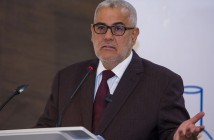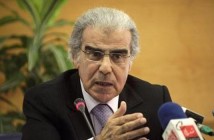
Joni Balter / Seattle Times editorial columnist
The European Union is grappling with waves of immigrants and disagreements about how or whether to welcome the newcomers. Immigration woes have spurred much second-guessing about whether the European megastate can ever be a true multiethnic society, writes Joni Balter.
PARIS — You take the No. 4 subway a few blocks from where the City of Light itself began, and within 20 minutes, enter another Paris, at Les Puces de Saint-Ouen flea market. Here among the lively, bustling stalls clustered at the northern edge of the city, one hears the languages of France’s former colonies and protectorates — and then some. The smart set out hunting for bargain antiques mingles with immigrants from Tunisia, Morocco, Algeria, Senegal, Libya and Egypt, shopping for shirts, shoes and other necessities.By Joni Balter
Seattle Times editorial columnist
At first, the market scene seems the ideal image of a 21st-century French melting pot.
If only it were so.
These are dark days on the European continent, with the troubles of the euro threatening unity. At the same time, large waves of immigrants, and disagreement about how or whether to welcome them, are roiling relations between various European countries. A tide of newcomers, compounded byfears of record numbers of new arrivals, nettle the European Union in daunting ways.
Indeed, immigration woes have spurred much second-guessing about whether the European megastate can ever be a true multiethnic society.
German Chancellor Angela Merkel, British Prime Minister David Cameron and French President Nicolas Sarkozy have declared, “Multiculturalism has failed.”
Multiculturalism is one thing; integration another. A 10-day research swing through France and Belgium revealed a more nuanced picture. Europe is experiencing numerous paroxysms about how much migration to allow and how to blend many different cultures together. Nothing smooth or simple about it.
But holler and squirm, and they do, Europe will have to find new ways to make immigration work better, mostly because it has to.
There is no going back, no way to unwind the union, no need to eliminate popular passport-free travel between most of the countries of the EU.
The free movement of people between most European countries, as captured in the Schengen Agreement, and the euro, are two pillars of today’s Europe. Both have been hugely challenged in recent months.
It is fair to say, and many observers come to the same conclusion, the fragile union of European countries moves along in gradual steps, propelled by crisis and the unique domestic politics of the 27 member states.
If Merkel or Sarkozy get oh-so animated about immigrants, maybe they are worrying more about the political challenge from the far right in their own countries than any inconvenience or expense of accommodating a large group of newcomers. A few weeks ago, Sarkozy’s government banned prayers in the streets outside mosques and sent Muslims to pray in an old fire-brigade barracks.
The French election is seven months away. Center-right Sarkozy jostles for position with far right Marine Le Pen who described the growing phenomenon of praying on the streets and sidewalks as “an invasion.”
Revolution’s movement
The most recent European immigration crisis followed the dramatic exuberance and migration resulting from Arab Spring. Shortly after January’s revolution in Tunisia, thousands of people departed by boat, landing at the Italian island of Lampedusa, which is not far away.
Then Libyans and foreign workers residing in Libya began to move and by late May, 40,000 newcomers or more had arrived. Different experts offer different numbers and time frames for the total amount of migration.
Once inside the Schengen borders, an individual can travel just about anywhere. Migrants tend to travel to countries of colonial or language connection; many headed for France.
That did not sit well in the nation of the Tricolour, one of the most desirable countries for people seeking asylum. France has 5 million Muslims, probably the largest Muslim minority of any European country.
Sarkozy shocked many people when he reinstated temporary border controls with Italy for several hours last spring and began sending some new arrivals back to Italy. Italians are not exactly keen on mass migration either.
Having lived briefly in Italy, I know Italians are edgy about this topic. Many northern Italians have no use for southern Italians and sometimes tensions boil between residents of one region against another, age-old schisms from the history books.
The immigration crisis calmed in recent weeks for several reasons: the long August “vacances,” the ability to send back some new arrivals, the far greater urgency of the crumbling euro, a sense that the EU Commission might provide relief.
A few weeks ago, the EU’s executive branch proposed a new mechanism to deal with immigration woes, “The Greek clause,” allowing the EU to suspend countries like Greece from the Schengen passport-free travel area. That means borders between Greece and other EU countries could be reinstated when external borders prove too leaky. Greece seeps.
The Financial Times reports that of an estimated 104,000 migrants that crossed illegally into the EU in 2010, nearly 88,000 arrived through Greece.
EU proposal
For EU Commissioner Cecilia Malmström, the best plan is utterly European. Rather than have member states decide when to close borders, she wants the EU Commission and member states to be final arbiters. The strength of the larger union takes precedence.
Whether a proposal like hers has any chance in the EU is anyone’s guess, because other countries — France and Germany in particular — insist on greater ability to control their own internal borders in an emergency.
Some countries in the EU have a tradition of accepting newcomers; some are uncomfortable with so many different people coming in and living off the Welfare Wonderland. Even while awaiting asylum, some countries and humanitarian groups provide a range of benefits.
Europe’s population is still growing but is expected to peak in a few years. Without immigrants, Europe will become the “old continent.”
“We need immigrants,” said Michele Cercone, spokesman for EU’s Malmström. Europe’s aging population, low birthrate and famed pension problems make it necessary, he explained, for Europe to bring in new workers. “We will need immigrants even more in the future.”
The fight in Europe in some ways boils down to one between wealthier northern countries and poorer southern ones.
Too much, too fast
Large waves of immigrants represent change coming at a rate that is too much, too fast, especially with unemployment so high.
“The Belgians are really nice and largely open,” says Mounir Zammouri, age 40, a Belgian and Tunisian citizen living in Brussels, where he plays recreational soccer and works in a restaurant. “But the tight economy spurs fears that immigrants will take European jobs.”
France has a long history of welcoming immigrants, but for many years, and with notable exceptions, the newcomers were Catholic and white, like the rest of France. More recent arrivals are brown or black-skinned and Muslim.
How does a largely secular group of countries mix, mingle and welcome new arrivals who are intensely religious? Don’t forget, like many immigrant groups, the latest newcomers sometimes prefer to live in mono-ethnic communities and present themselves as different and separate by wearing their burqa, niqab and the rest of it.
France, for one, banned full-face veils, and though that sounds radical, once on the ground, you grasp the wisdom of it.
“France is the land of läicité,” explained Stephane Fratacci, secretary-general for immigration and integration for the French Interior Ministry, referring to France’s very sturdy separation of church and state. “This is not a country that is ignoring religion. Religion is a matter of privacy. You have total freedom in being involved in religious practice.”
But a country based on the principle of “French first,” one so nationalistic in focus, does not allow big Catholic crosses or other bold religious symbols in public either.
The U.S. also obviously separates church and state but would never be able to ban the burqa because of the constitutional protection of freedom of religious expression.
Amanda Klekowski von Koppenfels directs the master’s program in Migration Studies at the University of Kent, Brussels. She frequently asks her students to analyze this quote: “Immigrants coming over today are of a different race and religion; they’re not integrating the way the older ones did.”
This is a bit of a trick. It was said in 1919 in the U.S. as Bostonians struggled with large waves of Italian immigrants. In other words, attitudes toward immigration can be universal and enduring. Obviously, the Italians mixed in well; it just took a while.
Some Europeans quietly confide that at least white Americans pretend to try to live and work equally with people of a different ethnicity or skin color. In Europe, many don’t even bother to fake it.
In the U.S., you rarely hear people rail against a math whiz from India or Pakistan coming to work in the new bio-or-high tech world. But Mexicans and people without jobs drove some of the worst lawmaking in recent memory. Arizona’s tough immigration law, part of which is on hold, is a good example. It requires police, while enforcing another law, to inquire about a person’s immigration status if officers have good reason to ask. In both the U.S. and Europe, there clearly are good immigrants and bad.
Assimilation
Salem Belgourch is a recent graduate of the prestigious Sciences Po, a school of privilege from which most of France’s recent leaders, save for Sarkozy, graduated. Belgourch was an affirmative-action admit from an immigrant suburb of Paris.
Belgourch serves on the city council of Colombes, a tough place infamous for car burnings a few years back,
Belgourch is first generation French; his parents came from Morocco in the 1960s to work. He is the youngest of 10 children, some of whom struggled mightily but also advised him how to succeed. With his masters in finance, he is clearly going places.
When I met Belgourch, he was dressed in a black corduroy jacket and pants and pink shirt. He oozed success and promise and didn’t flinch when I joked that he will some day be mayor of Paris.
“I don’t see myself as an immigrant. I am French. I study here. When you work, when you respect the rules, you don’t have a problem in France,” he said.
But Belgourch worries about other young people in his neighborhood who are unwilling to make some of the same moves his family did to acculturate and become part of France. As with many immigrants in many countries around the globe, education is the great divider.
“The next generation, I am afraid of that,” he said. “They think they are not French because they have some bad results at school. They are not assimilating and they don’t want to.”
Emmanuel Barbe, the French deputy secretary-general of European affairs, explained that acculturating or assimilating does not mean a new arrival leaves all traditions behind. But newcomers do have to in some way become French.
“It’s not a good idea if you have a piece of another country in your country,” Barbe explained, referring to ghettos of immigrants in places like Germany that led Merkel to proclaim multiculturalism’s failure.
So it goes in Europe where academics and others debate how to make immigration work.
Some left-leaning observers say Europe would be wise to welcome newcomers instead of emphasizing restrictions. Various forces are at play. The far right is gaining traction in many countries, because of so much change in such a short period of time.
Others argue the great migration was mostly hype. Yes, thousands of new people arrived in the last year from other continents but the tidal wave was nowhere as big as anticipated, so lighten up.
As I stood in front of the European Commission headquarters in Brussels and watched officials from a couple dozen countries scurry to meetings, I thought of the centuries when all these countries could do was fight each another. It was hard not to be impressed by the audaciousness of the European Union, however shaky and crisis-oriented it might be.
In the end, I side with the countries that want reasonable, sensibly controlled borders, temporarily, if need be. Europe needs newcomers and new workers. Of course. They are coming in anyway. But with unemployment so high, everyone needs time to absorb the change. Immigrants also have a duty once they arrive. They need to integrate, learn the new language and try to contribute to society in some way.
The grand experiment of the EU, the imperiled euro and the many challenges of immigration, are being tested like never before. It will all come together somehow because there are too many long-lasting benefits for Europe — peace and prosperity, just for starters.
Joni Balter is the 2011 journalist fellow of the European Union Center of Excellence at the University of Washington’s Jackson School of International Studies. Her columns appear regularly on the editorial pages of The Times. Her email address is jbalterm






